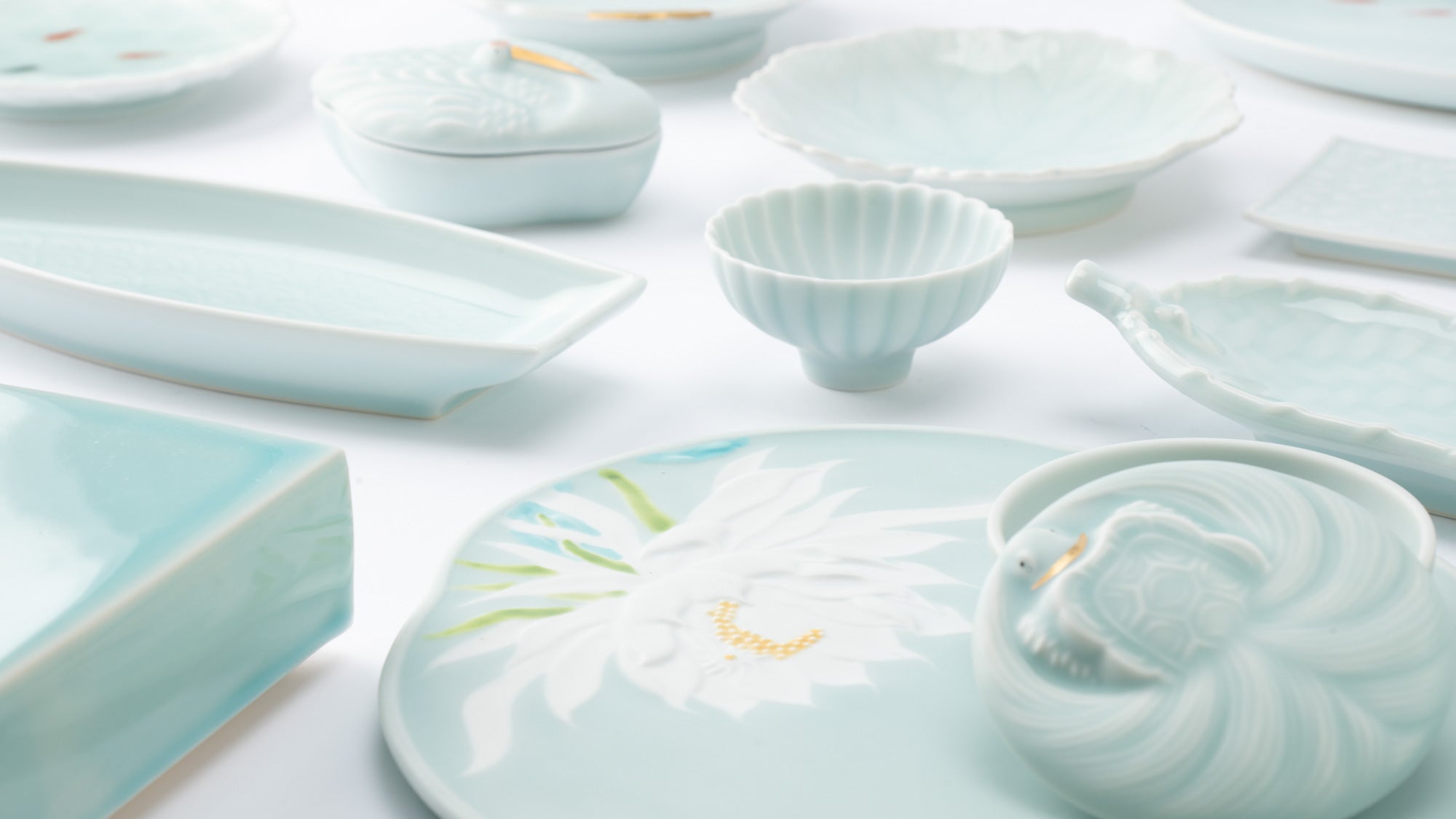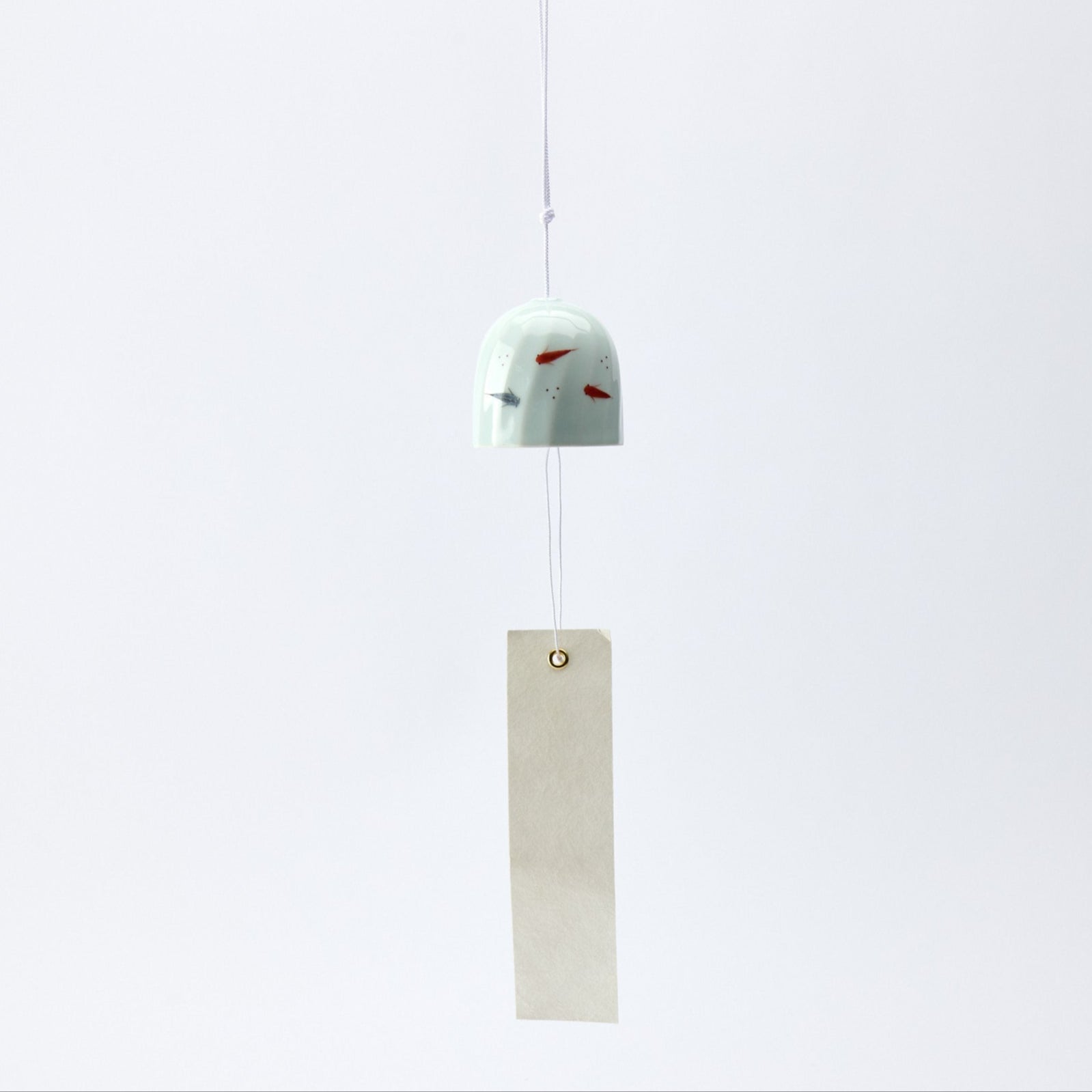
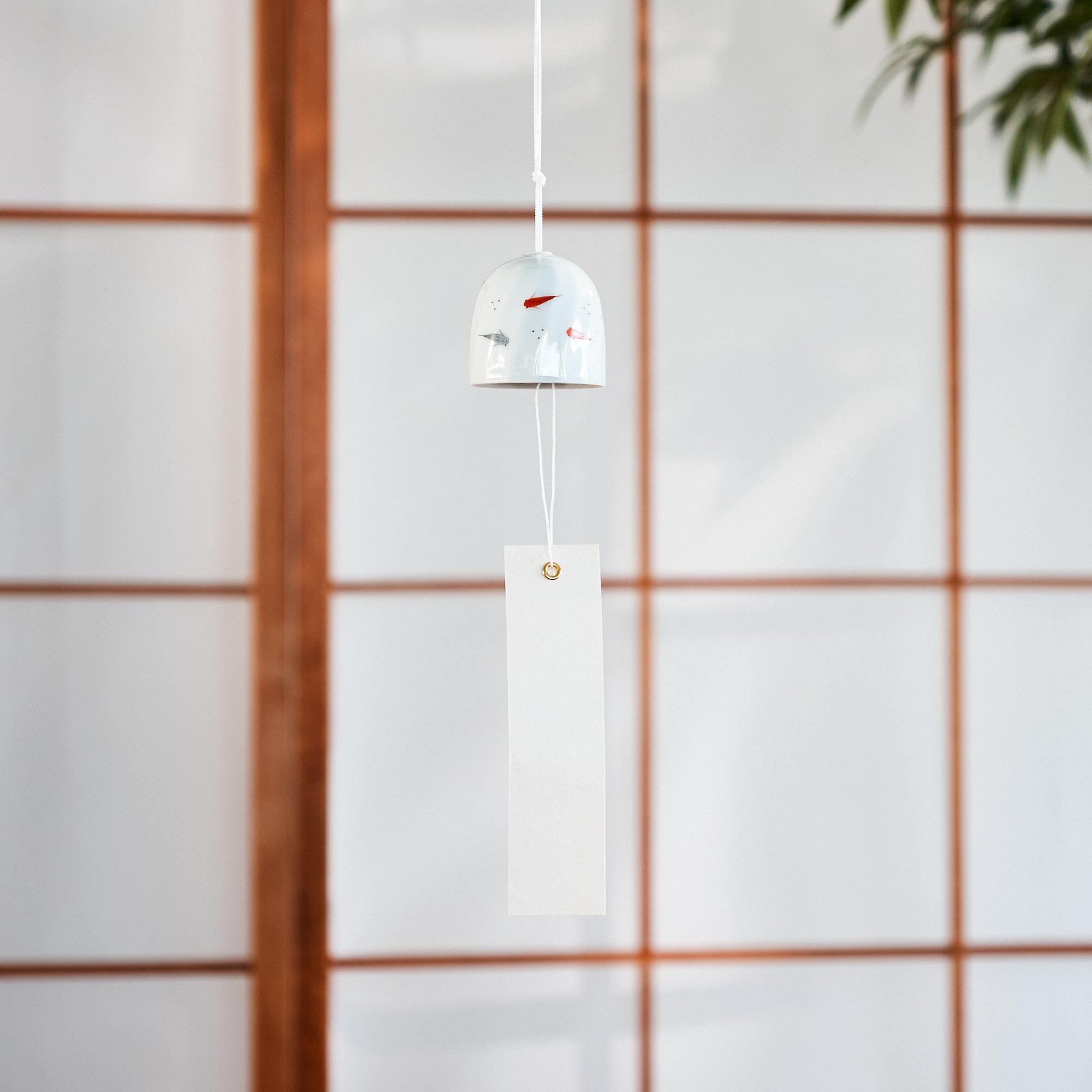
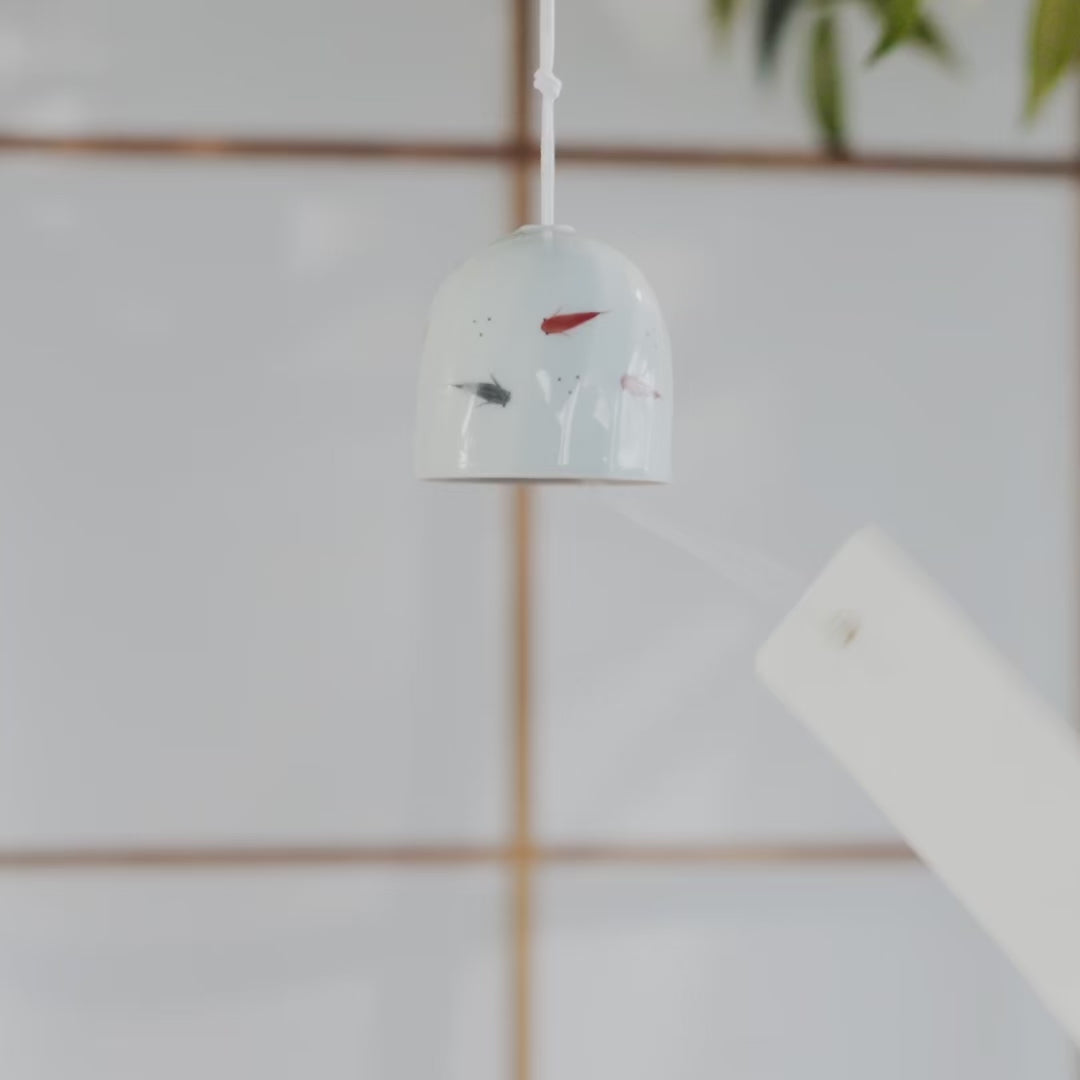
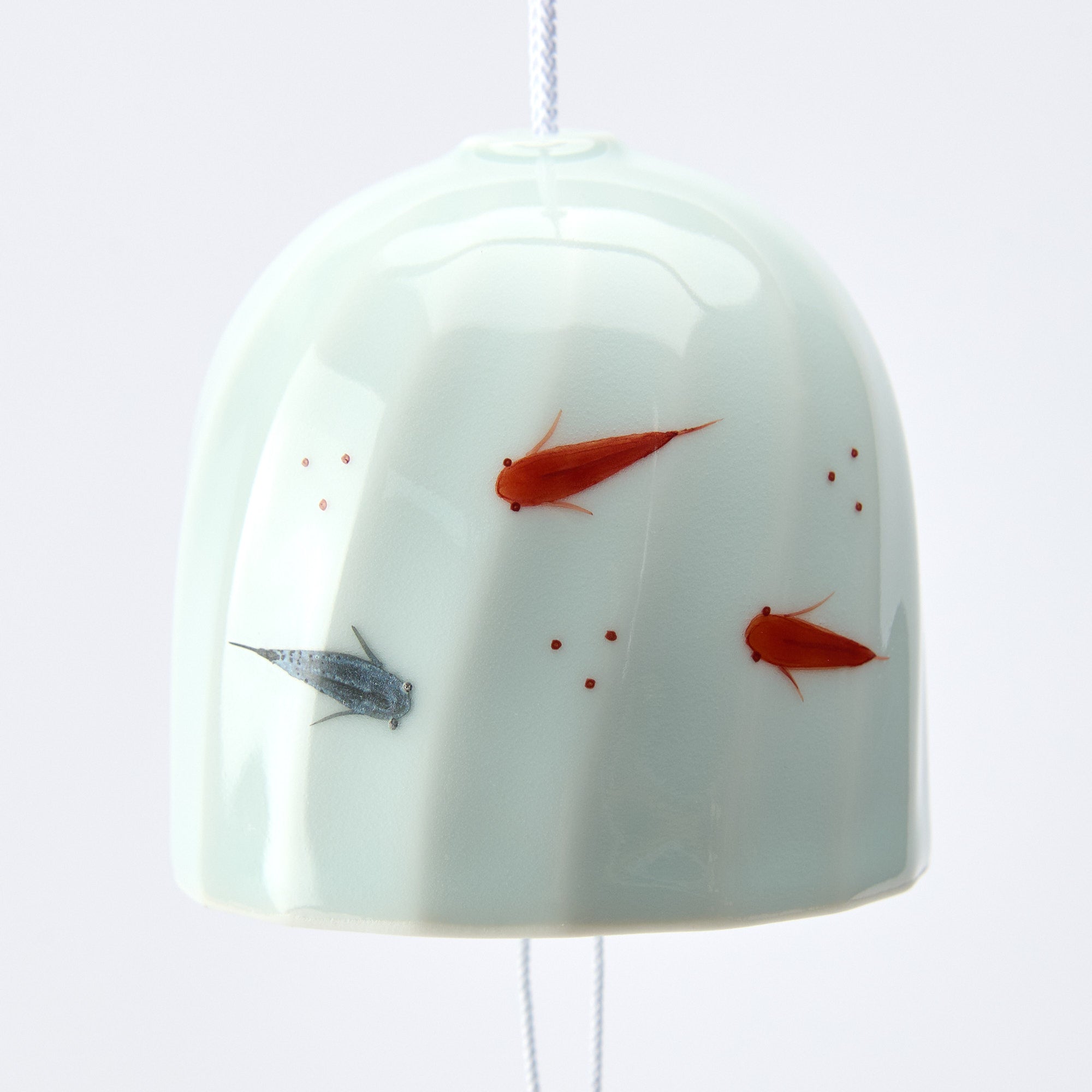
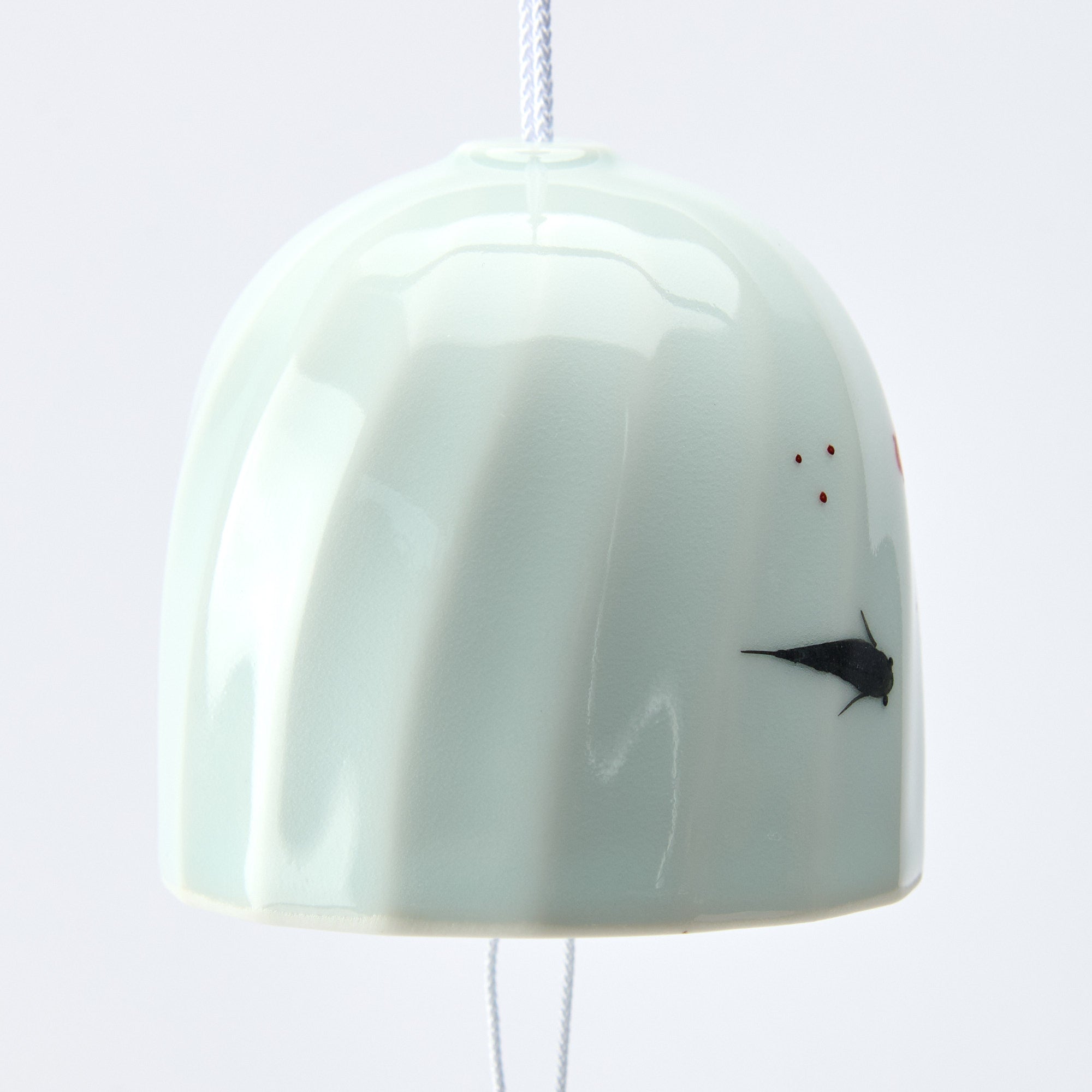
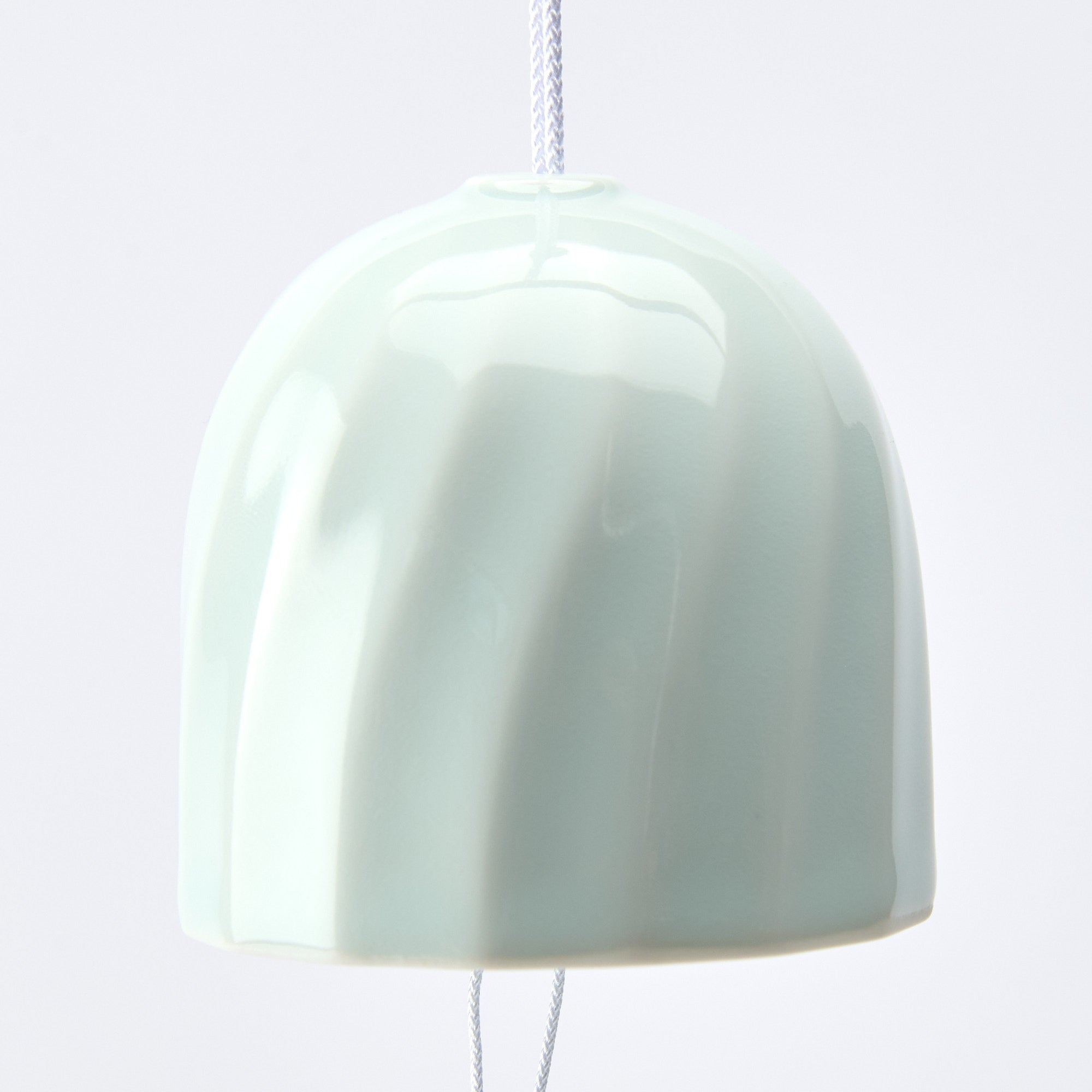
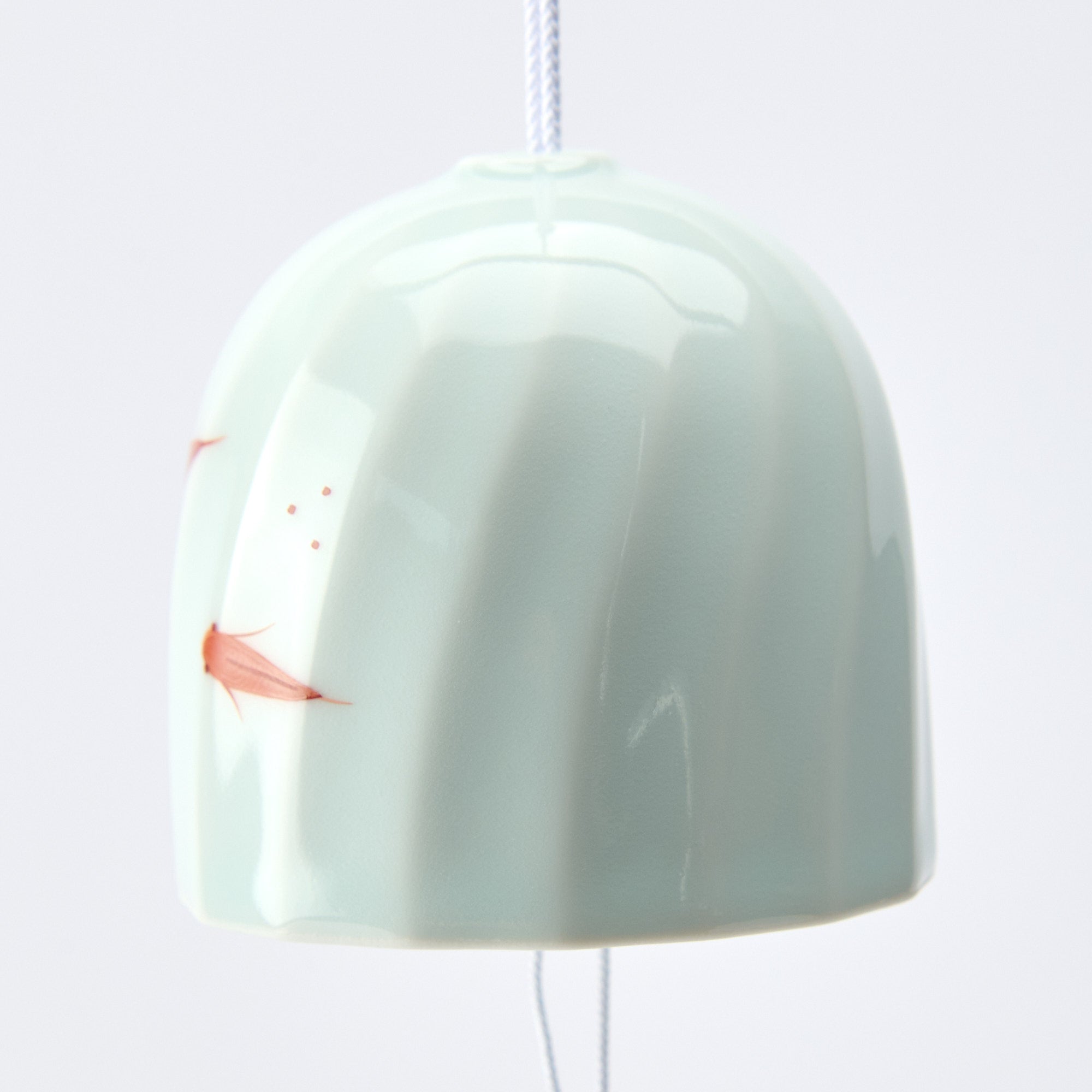
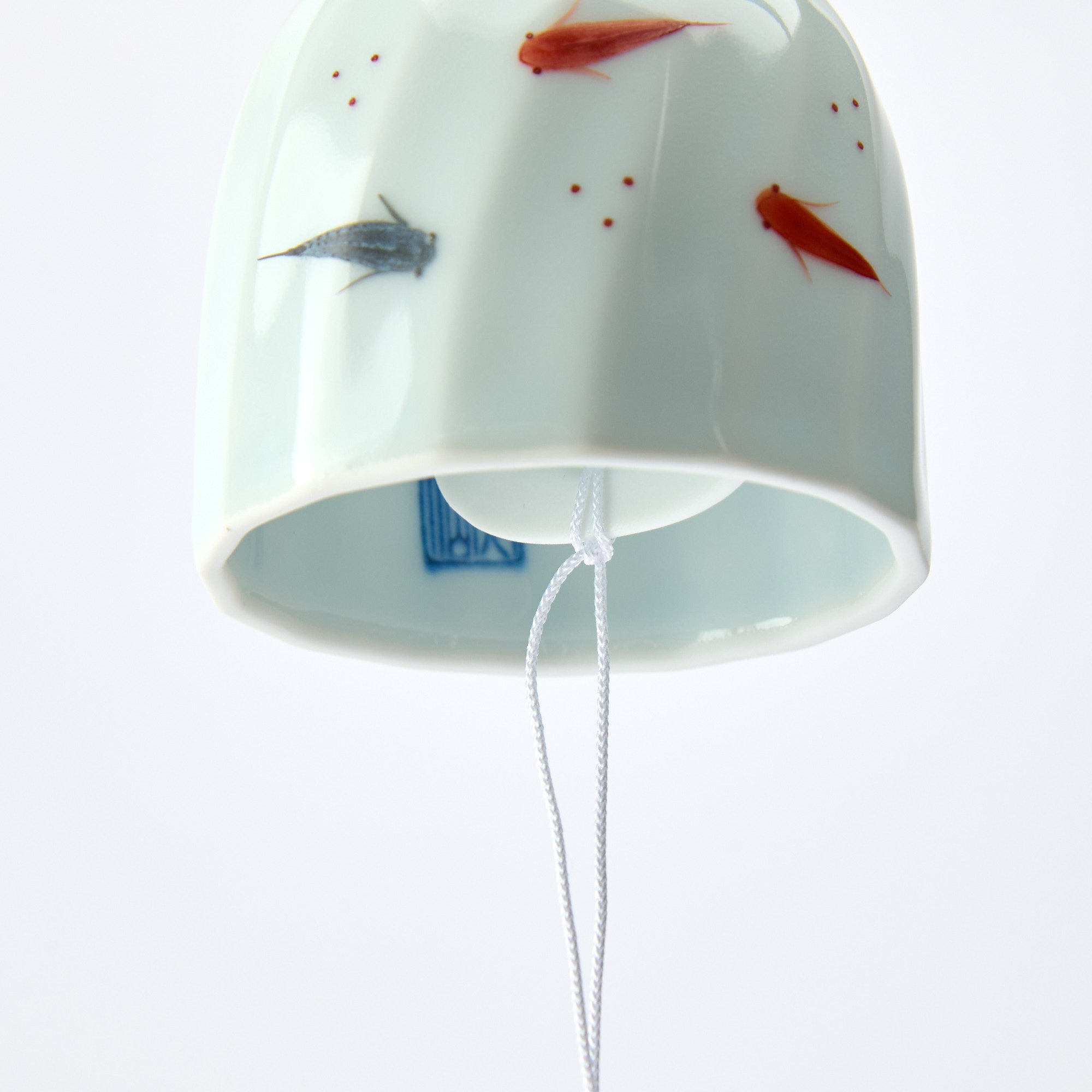
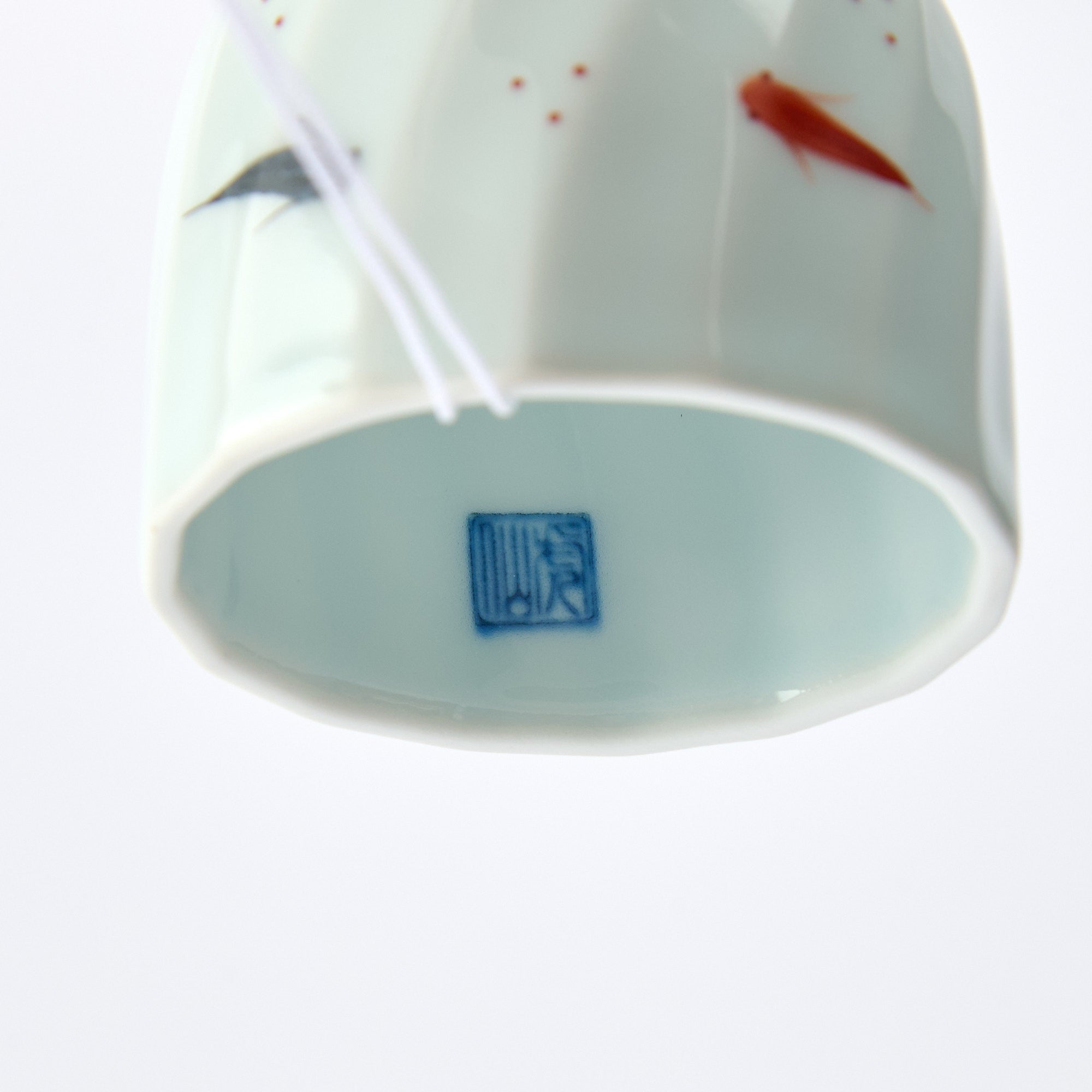
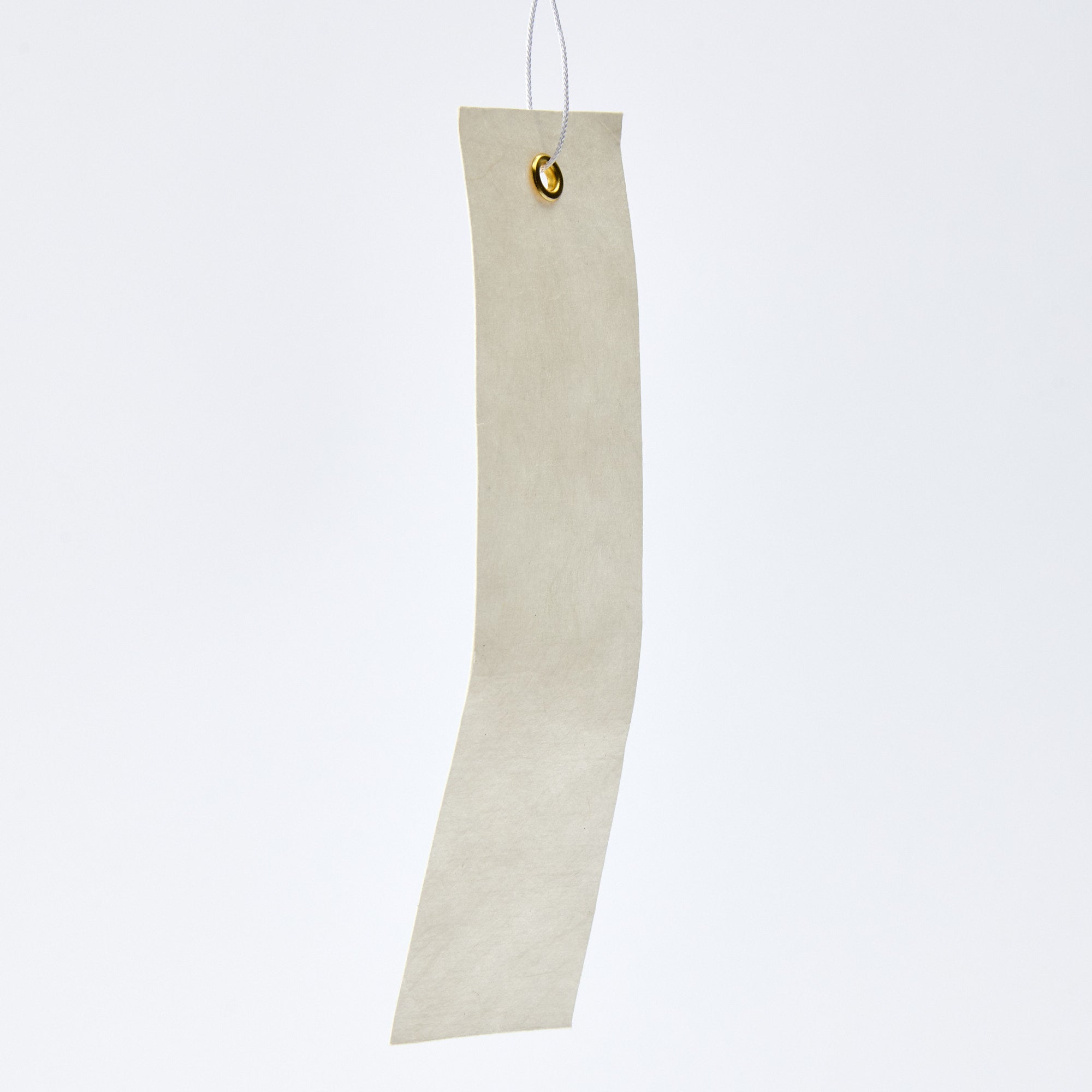
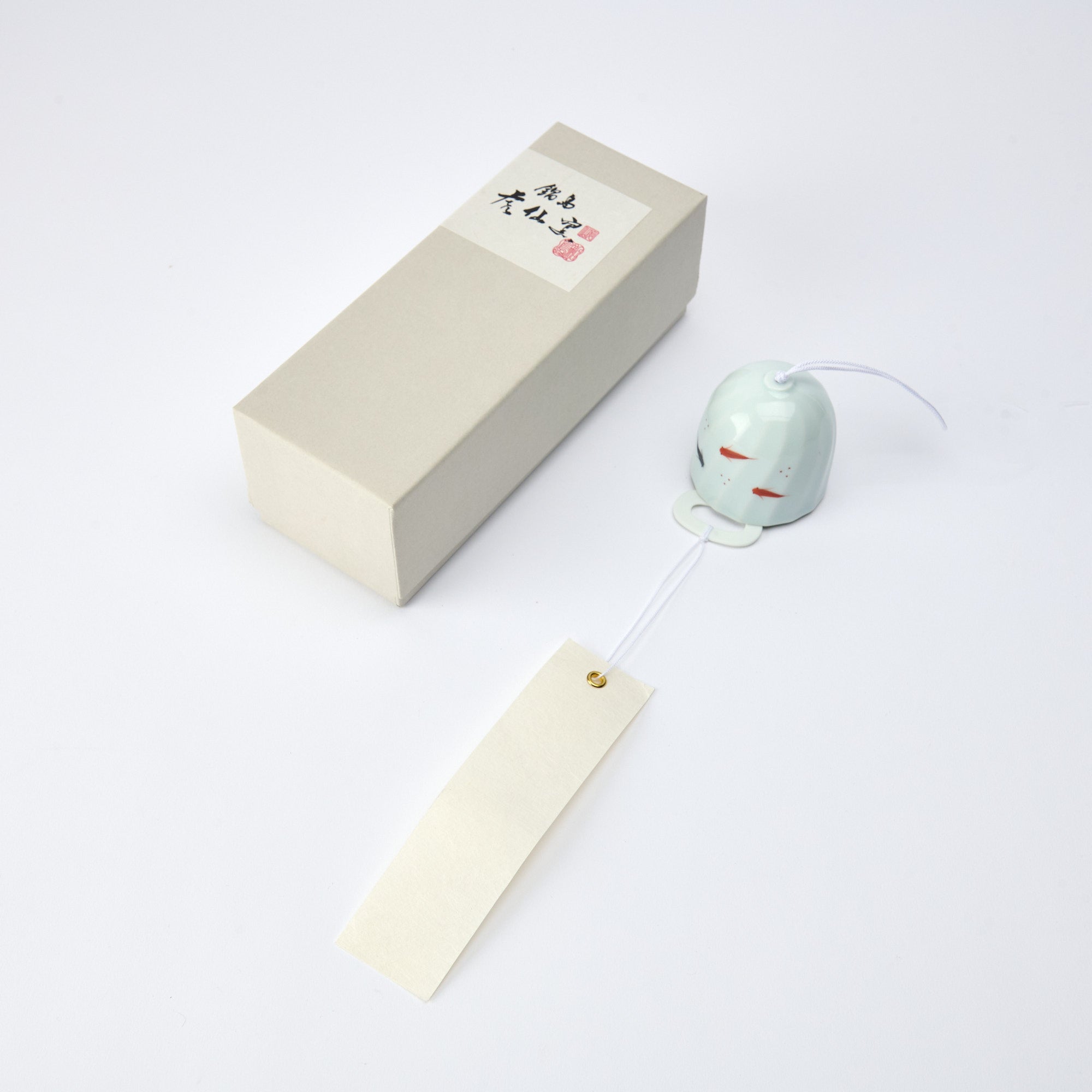
Medaka Rice Fish Wind Chime
Estimated Shipping Widget will be displayed here!
This porcelain wind chime features medaka, or Japanese rice fish, swimming gracefully across its celadon surface. As it sways, subtle diagonal carvings create the illusion of fish gliding through water. In Japan, medaka are a familiar sight in summer, their quiet presence bringing a sense of calm. Each design is meticulously hand-painted by artisans, giving the piece a lively, one-of-a-kind character.
The light blue celadon glaze lends the wind chime an airy elegance, while its exceptionally lightweight form produces a crisp, delicate ring that carries easily on the breeze.
Its paper strip is made from Nao Washi, a traditional handmade paper from Saga Prefecture, adding a soft texture that harmonizes with the porcelain’s serene blue tones—perfect for a peaceful summer setting.
DETAILS
| Quantity | 1 |
| Size |
[Wind chime] D 5.7 cm (2.2 in) x H 5.5 cm (2.2 in) [Strip of paper] L 15.5 cm (6.1 in) x W 4 cm (1.6 in) |
| Weight | 75 g (2.6 oz) |
| Material |
[Wind chime] Porcelain [Strip of paper] Washi paper |
| Package Type | Paper box |
Maker / Brand
Kosen Kiln specializes in products that use a variety of the three techniques that are characteristic of Nabeshima ware: iro-Nabeshima (overglaze enamel), ai-Nabeshima (sometsuke), and Nabeshima seiji (celadon). The founder, Kawasoe Tameo, dedicated himself to studying celadon porcelain, driven by a strong desire to make it accessible to many.
The current third generation, Kawasoe Takahiko, aims to "establish Nabeshima culture" and approaches celadon research from a perspective different from his grandfather. The kiln diligently works every day, striving toward a rich future of Nabeshima ware.
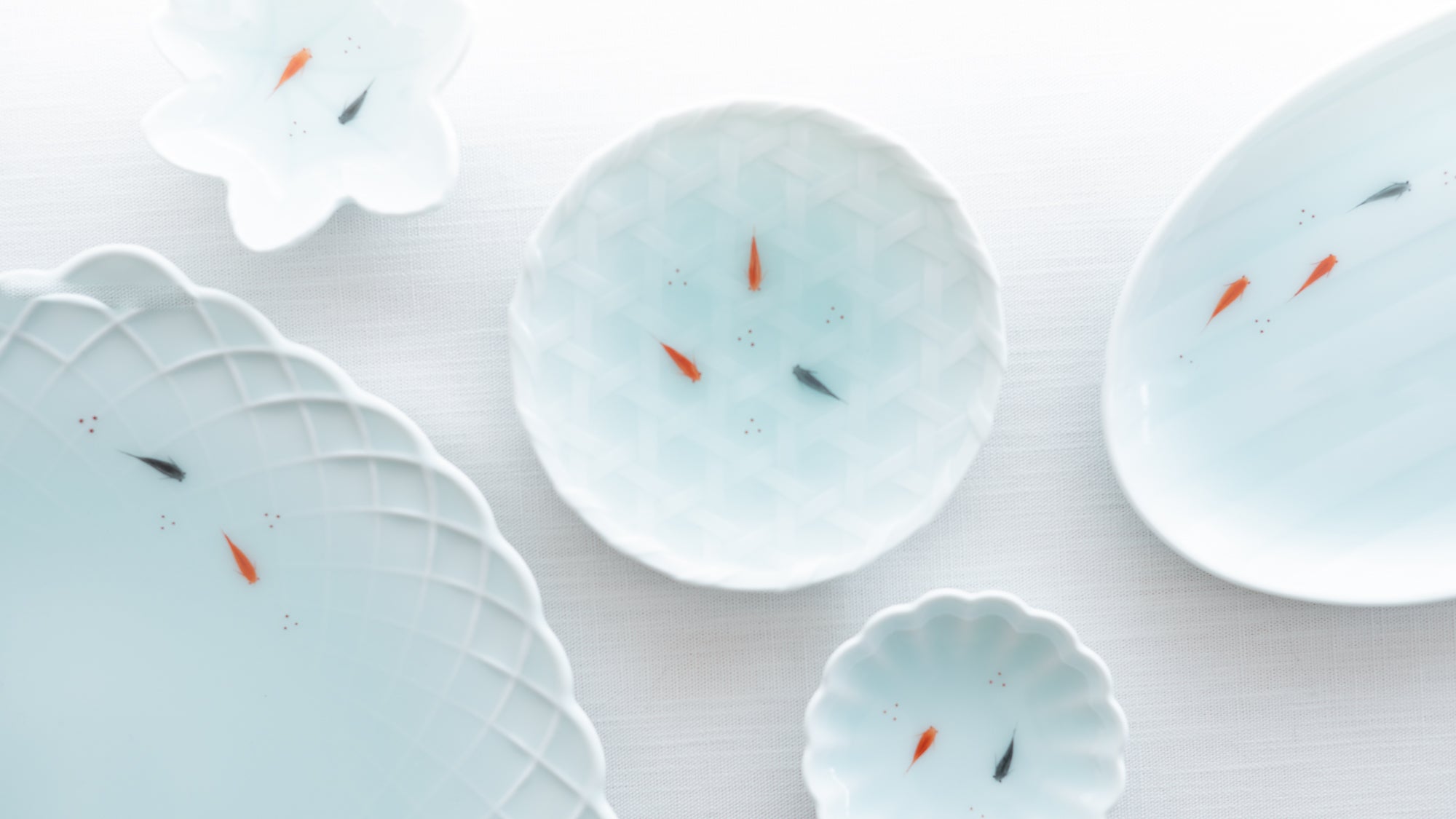
Crafts
Nabeshima ware is a type of porcelain crafted at the meticulously managed Nabeshima domain kiln. This kiln, which operated as a government-run project under the direct supervision of the Saga Nabeshima domain, flourished during the early Edo period (1603–1868 CE).
For approximately 250 years, Nabeshima ware was reserved solely and exclusively for shoguns and feudal lords, with the kilns producing exquisite pieces in styles like iro-Nabeshima (overglaze enamel), ai-Nabeshima (sometsuke), and Nabeshima seiji (celadon). After the feudal system ended, the kilns were privatized, welcoming new potters and giving rise to what is now known as Imari Nabeshima ware.
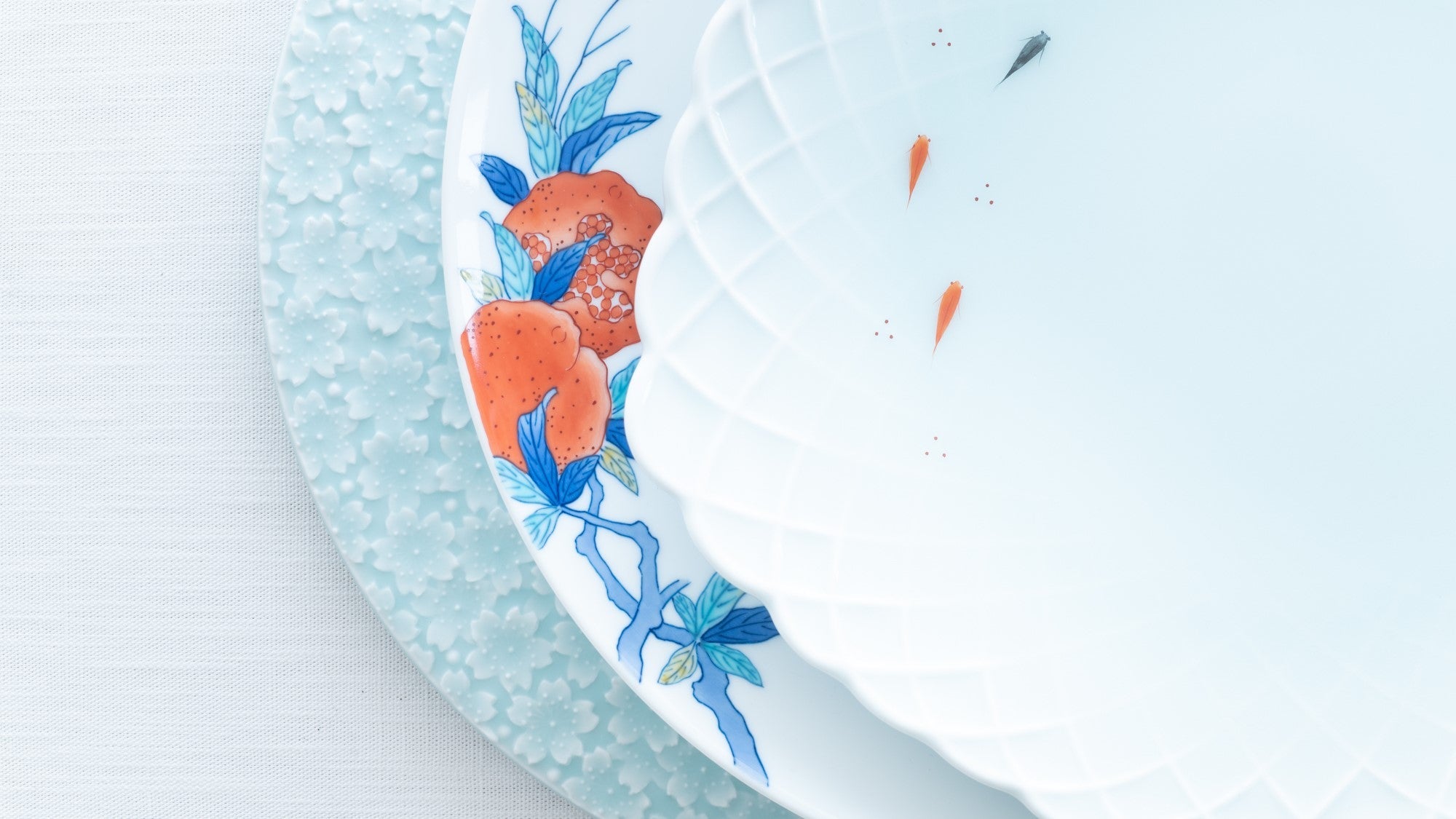
Choose options











Wind Chimes
In Japan, wind chimes are a cherished symbol of summer, enjoyed by those seeking refreshment from the heat and the humidity. When caressed by the breeze, Japanese wind chimes produce clear, delicate sounds that soothe the mind and provide a sense of coolness. Hang a wind chime from our collection outside to appreciate its music playing in the wind, or indoors to enjoy its beauty and calming presence all year round.

Celadon
Celadon porcelain originated in China and was introduced to Japan by the 10th century. Among the aristocratic classes at that time, celadon wares from China were regarded as the finest imported goods. They adored its mysterious blue and named it "secret-color."
Production of celadon ware began in the Hizen region, the northwestern part of present Kyushu in the early Edo period (1603 CE - 1868 CE), and the technique was later passed on to Kyoto and nearby areas. In 1957, the craft technology was designated a national intangible cultural asset. Celadon continues to be cherished and crafted by many potters and artisans today.
